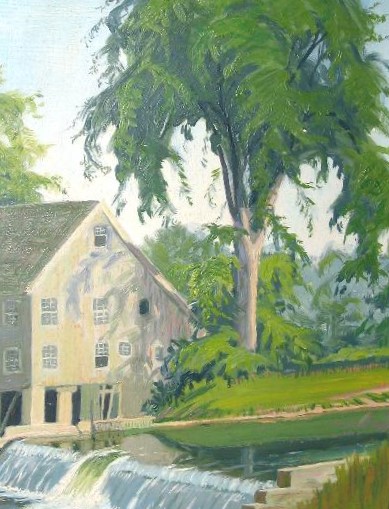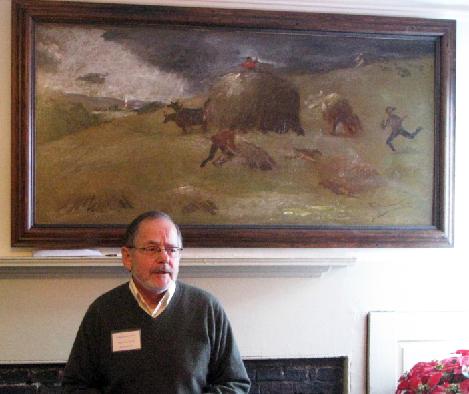A New Garden with an 18th Century Design
by Peggy Bliss
In 1999, Sarah C. la Cour, a landscape designer from Amherst, Mass., was contracted to design the garden for the Historical Society at 138 Main Street. Her work has been published in Traditional Gardening and in Alliance for Historic Landscape Preservation publications. Her garden design, approved by the town Planning and Zoning Commission and the Historic District Commission, is a re-creation of an eighteenth-century formal design, reflecting the style and plantings typical of New England.
Her work has been published in Traditional Gardening and in Alliance for Historic Landscape Preservation publications. Her garden design, approved by the town Planning and Zoning Commission and the Historic District Commission, is a re-creation of an eighteenth-century formal design, reflecting the style and plantings typical of New England.
Sarah’s proposal contained a history of New England gardens. Early kitchen gardens grew herbs and vegetables and were usually maintained by the women of the household. After the Revolutionary War, seeds and plants from around the world became available to gardeners. Gardens began incorporating flowers and climbing vines including honeysuckle and ornamental wisteria. Ornamental and fruit trees were popular. All were adjacent to the home and enclosed by picket fences to protect them from wandering livestock. In the early twentieth century, garden enclosures became more elaborate ironwork designs. Garden beds were colorful shapes made up of perennials and roses. Walking paths and benches allowed the viewer a quiet respite. Fountains and statuary became popular.
Sarah’s intent was “to create a garden in a natural and refined setting.” The garden was designed to integrate symmetrical plantings with existing features, such as mature shrubs and the wrought-iron fence. The design incorporated boxwood-edged brick and bluestone walks and quadrant beds. A retaining wall was built with funds donated by the Hartford Foundation for Public Giving.
Starting in 2005, a flower committee headed by society members Gene Goodwin, Jean Pickens and Portia Corbett developed a list of plants and planted the quadrant beds with perennials to provide color from May to October. Plantings included: geranium striatum, Campanula (blue), and autumn joy in the center circle; and white phlox, Stella d’Oro lilies, red bee balm, blue columbine and Russian sage in the quadrants. Lilacs, red bud, coreopsis and hostas were planted above the stone wall.
The copper fountain at the center of the garden was donated by Peter Bartucca, former president of the Historical Society, and his wife, Bobbie.
In June 2008, the garden was one of six homes and two museums featured in the Friends of the Farmington Library Kitchens & Gardens Tour. The event provided an opportunity to update the garden and finish the yard behind the society’s headquarters. As part of a volunteer UConn master gardener project, I updated the garden by adding annuals, herbs and perennials. The perennials were labeled so visitors to the garden could identify the plants.
The Treadwell list of 18th-century plantings was used as a guide in selecting plants. John Treadwell documented commonly found vegetables, herbs and flowers planted in Farmington gardens. From the list, these plants were added: pinks, daffodils, tulips, violas, blackberry lily, poppies, hollyhocks, sweet william, sweet pea, morning glories and marigolds. Herbs added to the garden included: parsley, coriander, pepper, savory, sweet marjoram, thyme, rue, hyssop, lemon balm, chive, tansy and wormwood. These and lamb’s ear, iris, oregano, yellow yarrow, germander and lavender were generously donated by the Connecticut Unit of the Herb Society of America.
We welcome volunteers who would like to work in the garden, as well as donations of perennials.



